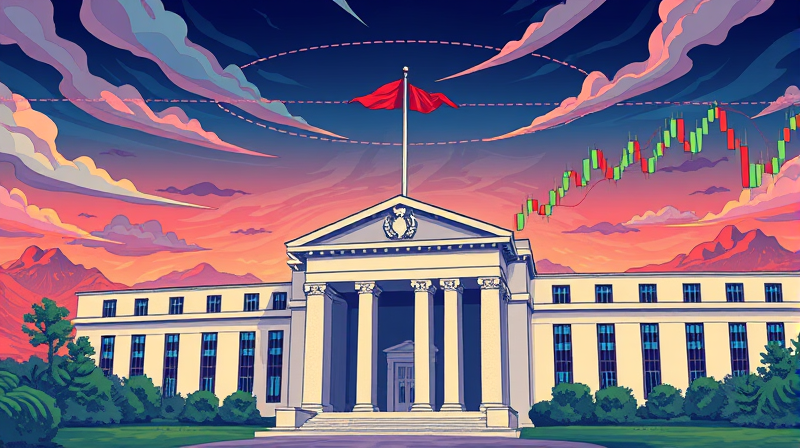
As geopolitical tensions flare across the Middle East, investors are turning once again to the timeless allure of gold. In June 2025, spot prices surged past $3,700 per ounce, marking a year-to-date gain exceeding 25%. Yet these peaks have proven fleeting, underscoring gold’s dual nature as both a sanctuary in turbulent times and a barometer of risk appetite.
While headlines of U.S. airstrikes on Iranian nuclear sites and sudden ceasefires between Israel and Iran have driven sharp swings, markets have also shown an uncanny ability to absorb shocks once diplomatic channels open. This dynamic interplay between conflict and calm is at the heart of gold’s current narrative.
Gold’s volatility in June has been unparalleled. Early in the month, a rapid escalation in Middle East hostilities sent prices rocketing by nearly 2% intraday. Within days, however, a surprise ceasefire announcement pushed gold back down over 1%, settling around $3,300 per ounce.
These whipsaw moves illustrate how quickly safe-haven flows can reverse when investors perceive a reduced threat. Traders are acutely attuned to fresh information, rewarding bursts of uncertainty and punishing complacency when peace talks gain traction.
Despite the dramatic swings, year-to-date performance remains robust, with gold outperforming many traditional asset classes. Even when prices dip, central banks and long-term holders continue to accumulate, providing an enduring floor beneath the market.
The primary catalyst for gold’s recent rallies has been the intensifying Israel-Iran confrontation. U.S. airstrikes on Iranian facilities injected new uncertainty into global markets, prompting a wave of buying.
Yet, as history has shown, these spikes are often temporary. The 2022 Russia-Ukraine war produced a similar pattern: initial surges followed by gradual retreats as markets “priced in” the conflict’s persistence.
This cycle repeats because investors require fresh escalation to maintain momentum. A single ceasefire or diplomatic overture can erase days of gains, while renewed skirmishes can reignite the bid for bullion.
Technicians are watching key levels closely. Short-term resistance sits between $3,450 and $3,520, with a decisive breakout above $3,770 opening the path to $4,000, according to Bank of America. On the downside, support near $3,314 and a stronger floor at $3,225 could contain losses.
Analyst projections suggest a range-bound summer unless geopolitical tensions escalate significantly or U.S. policy shifts dramatically. A broad fiscal deal in Washington or clear signals of Federal Reserve rate cuts could prove more durable drivers than conflict alone.
To illustrate these scenarios, consider the following table of price targets and triggers:
Beyond geopolitics, broad economic conditions and central bank behavior are vital to gold’s trajectory. Ongoing U.S. fiscal debates—especially around tax and spending bills—have raised concerns about ballooning deficits, lifting gold as a hedge against policy uncertainty.
At the same time, central banks remain active buyers. Official institutions boosted purchases steadily over the past year, underpinning lasting safe-haven appeal. Lower real interest rates and expectations of Fed easing further support non-yielding gold.
Investors are also tracking the U.S. dollar and oil markets. A weaker dollar typically boosts gold’s appeal, while oil price swings reflect underlying energy security risks that feed into broader risk sentiment.
For those seeking to navigate gold’s ups and downs, a disciplined approach is key. Rather than chasing peaks or panicking on dips, focus on strategic allocation and risk management.
By adhering to these guidelines, investors can harness gold’s unique attributes without succumbing to emotional trading. Remember that gold is most effective as part of a broader portfolio strategy, providing ballast when global uncertainties mount.
Markets will continue to oscillate between fear and optimism as news flows evolve. If hostilities intensify, gold’s allure as a safe haven will strengthen, potentially driving prices toward the $3,700–$4,000 range. Conversely, meaningful diplomatic advances or clear fiscal policy outcomes could shift focus back to equities and risk-on assets.
Ultimately, gold’s journey in 2025 will be shaped by a complex web of factors: geopolitical flashpoints, fiscal and monetary policy, and broader economic trends. Investors who combine strategic insight with disciplined execution are best positioned to capture gold’s upside while navigating its inevitable swings.
As the world grapples with uncertainty, gold endures as a symbol of stability. Whether used to hedge against turmoil or as a long-term store of value, its role remains unequivocal. When tensions rise, it’s a reminder that even in the most volatile times, there are anchors of security to hold fast.
References













